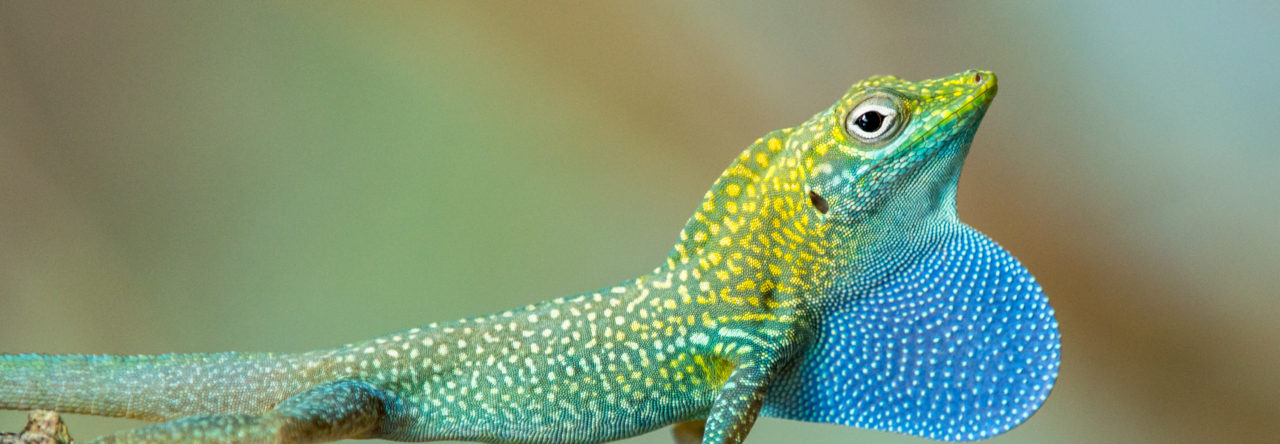
Left: A. apletophallus. Right: Decline in abundance of A. apletophallus on BCI
Monitoring populations over long time scales is one of the most important endeavours in ecology, but maintaining funding over decades is a huge challenge when the tenure of most research grants is only 3 years. The Smithsonian Tropical Research Institute (STRI) has made a concerted effort to address this problem and established long-term monitoring of animals (including an anole), plants and environmental variables on Barro Colorado Island (BCI) and the nearby forests surrounding the Panama Canal. These data provide a rare glimpse into the long-term changes in populations and climate in the tropics.
Recently, we used these data to investigate how population abundance of the anolis lizard Anolis apletophallus has changed over time and whether climate was related to abundance and population growth rate. The study recently published in PLOS ONE identified a decline in lizard abundance over the 40-yr study period. We also observed boom and bust fluctuations in population abundance and found that cycles in population growth rate were related to global weather cycles known as el nino and la nina. Specifically, population growth rate was lower one year after el nino (warmer-drier) events. This decline in abundance and the negative relationship of population growth rate with el nino events is alarming, as el nino events are expected to increase in frequency and severity in the future. Changes in the abundance of this lizard may also have knock-on effects to many other animals in the forest because these lizards are eaten by a range of animals including birds, snakes, other lizards, spiders, ants, bats, monkeys and opossums.
The long-term decline in abundance that we identified is consistent with findings of another long-term study of amphibians and reptiles in Cost Rica by Whitfield et al in 2007. In their study they identified a decline in the leaf litter amphibians and reptiles and suggest this is due to a climate driven reduction in leaf litter. In a more recent follow-up study they provide further evidence of this. Although, we did not measure leaf litter, there is no evidence of a reduction in leaf litter on BCI. The parallel declines that were observed in Panama and Cost Rica are worrying and emphasize the importance of long-term data to help us understand how anole populations are coping with climate change.
Most of the hundreds of researchers that visit STRI’s research station on BCI scarcely notice the anoles. Some are drawn to the monkeys or bats, but most are there to study tropical forest ecology making use of the famous 50ha plot: a forest plot where every free standing tree has been measured every five years since 1980. I can understand how some might overlook the anoles in the forest, they can be extremely well camouflaged, but as readers of AA know, anoles are also highly conspicuous.

Left: Spot the A. apletophallus on the forest floor. Right: Male A. apletophallus displaying
Thankfully, BCI’s anoles have not always been overlooked. The most abundant anole on BCI is Anolis apletophallus (previously limifrons), so abundant that Stan Rand, STRI’s world-renowned herpetologist, described it as the ‘most abundant vertebrate in the forest.’ Thanks in part to Stan’s interest in this little brown anole, the species was the focus of much research on BCI in 70-80s most notably by Robin Andrews. Robin’s research on the ecology, physiology and life history of A. apletophallus remains some of the most detailed knowledge of a mainland anole today. Her work also had a lasting legacy at STRI, and the population monitoring that she began still continues today, some 44 years on.
The annual census, which has been continually funded by STRI, has been able to persist largely because of the efforts of STRI scientists.
Read More


















